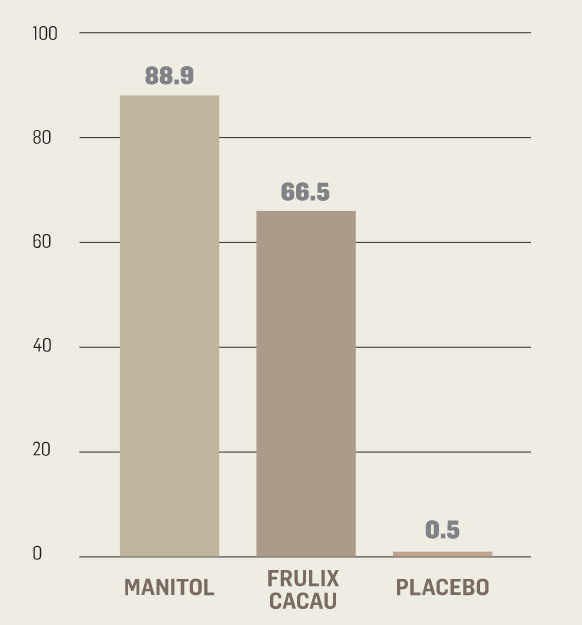Enhanced TDS
Knowde-enriched technical product data sheet
Identification & Functionality
- INCI Name
- Ingredient Origin
- Cosmetic Ingredients Functions
- Technologies
- Product Families
Features & Benefits
- Benefit Claims
- Labeling Claims
- The Plant
Chocolate and Cocoa Butter are Extracted from Fruit Seed
Cacao tree is a native from the Amazon rainforest and its principal center of origin are the regions close to the sources of the Amazon and Orinoco rivers. The cocoa tree has a straight trunk, measuring between 6 and 12 meters in height, with large elongated leaves, forming ribs, thick branches and covered in downy fluff. The flowers are yellow, pink or white in colar and sprout from the branches and trunk forming bunches. The fruits have an oval-oblong form, and contain numerous flat seeds covered in aqueous, acid pulp. The fruits emerge along the trunk and branches and when they ripen they turn yellowish. The seeds or nuts represent the most valuable part of the fruit, since it is from them that the chocolate and fat – known as cocoa butter and used in the cosmetics and pharmaceutical industries – are obtained. Only recently, however, has the pulp come to be used as a foodstuff, due to its delicate taste and its nutritional properties. The pulp of the fruit is considered an excellent tonic, promoting the healthy functioning of the urinary apparatus, combating nephritis and heart disease.
Technology
FRULIX CERTIFIED CACAU (Cocoa) is obtained through an exclusive biotechnological process that mimics the natural ripening of fruits. Using the fruits’ native enzymes ASSESSA transforms it’s pulp into a crystalline liquid with all the active ingredients of the fruit, in concentrations equivalent to those found in nature. FRULIX CERTIFIED CACAU (Cocoa) is obtained from fresh fruit pulp, is solvent-free and 100% natural.
- Functions
FRULIX CERTIFIED CACAU (COCOA) boasts emollient, protective, moisturizing, nutrient and remineralizing properties of natural fruit and is recommended for hair-care products – shampoos, conditioners, facemasks, mousses – in formulas for treatment of dry, dyed and weakened hair where nutrition, protection and moisturizing are necessary.
Applications & Uses
- Application Format
- Hair Care Applications
- Skin Care Applications
- Use Level
- 1.0 - 10.0%
- Applications
As a very concentrated product, FRULIX CERTIFIED CACAU (COCOA) should be used in smaller concentrations than those used when making formulas with conventional extracts.
- Usage Guidelines
FRULIX CERTIFIED CACAU (COCOA) is compatible with the majority of ingredients used in cosmetic formulations for the treatment of skin and hair and may be incorporated cold, directly into the aqueous phase of the formulas, in accordance with the suggestions of usage levels found in the table below.
PRODUCT % Moisturizing emulsion 1.0 to 5.0 Nutritive cream 1.0 to 5.0 Night cream 1.0 to 5.0 Face mask 3.0 to 10.0 Shampoo 1.0 to 3.0 Conditioner 1.0 to 3.0 Leave on 1.0 to 3.0
Properties
- Physical Form
- Composition
Value Units Test Method / Conditions Calcium Content (Mineral Salts) 84.82 mg/L - Copper Content (Mineral Salts) 0.93 mg/L - Iron Content (Mineral Salts) 10.25 mg/L - Magnesium Content (Mineral Salts) 139.81 mg/L - Manganese Content (Mineral Salts) 0.93 mg/L - Potassium Content 717.69 mg/L - Proteins Content min. 60 mg/L - Sodium Content (Mineral Salts) 195.73 mg/L - Tiamina Content (B1,Vitamin *) 0.42 mg/L - Vitamin Content (B6) 0.12 mg/L - Zinc Content (Mineral Salts) 2.8 mg/L - - Note
Vitamins* - *Analysis performed after 4 months of shelf-life
Regulatory & Compliance
- Certifications & Compliance
Technical Details & Test Data
- Antioxidant Action
The test for antioxidant action was carried out in accordance with the Fenton protocol, comparing FRULIX certified CACAU (COCOA) with a saline solution (placebo) and with mannitol as a positive control. The graph below shows the antioxidant action compared to the action of the saline solution.
Inhibition of Decomposition of Deoxi-Ribose (Fenton)

FRULIX CERTIFIED CACAU (COCOA) shows good antioxidant activity when compared to the placebo (66.5%).